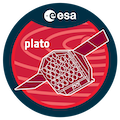Speaker
Description
The growing volume of data from space missions renders manual exoplanet candidate identification impractical. Machine learning offers a solution, but conventional methods struggle with signal noise inherent in observations. This work proposes a conceptual trial for a novel deep learning approach to exoplanet classification using convolutional neural networks (CNNs). We introduce a technique of imaging light curves before feeding them into CNNs, effectively increasing the data dimensionality and allowing application of powerful computer vision techniques. Our approach ranks plausible planet signals higher than false-positive signals 97.22% of the time in our test dataset. Although exceeding the performance of the AstroNet model on different datasets other than Kepler mission’s data, such as K2’s and TESS’ data, further improvement is ongoing. We emphasize the importance of generalizability to upcoming missions like PLATO and propose further exploration of this imaging method in future research.

